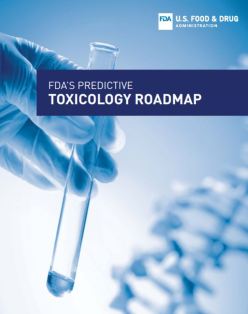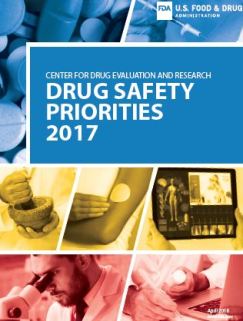
Predictive Toxicology Roadmap
Significant steps by FDA to upgrade toxicology toolboxes
- Expand toxicology predictive capabilities
- Potentially reduce the use of animal testing
Goals of roadmap for integrating predictive toxicology methods into safety and risk assessments
- Develop and evaluate emerging toxicological methods and new technologies
- Incorporate these methods and technologies into regulatory review
Remarks from FDA Commissioner Scott Gottlieb, M.D. on Fiscal Year 2019 budget request for FDA
President’s 2019 Budget request for $5.8 billion in total resources for FDA
- Includes $190 million in user fees
- Requests new FDA resources to advance science, domestic technology, public health
- Advance new paradigm in regulation of digital health technology
- Advanced manufacturing to bring more production back to US
- Improve ability to respond to public health emergencies like flu
- Modernize generic drug review
- New approaches for treatments for rare pediatric diseases
Build knowledge management platform for drug and medical device review programs
- Store and manage collected experience of review staff
- Essential to modernizing medical product review and establish scientific precedents
- Issue guidances documents focused on specific diseases using efficient approaches
 Medical Device Safety Action Plan: Protecting Patients, Promoting Public Health
Medical Device Safety Action Plan: Protecting Patients, Promoting Public Health
Outlines how Agency will encourage innovation to improve safety, detect safety risks earlier, and keep doctors and patients better informed
- Robust medical device patient safety net
- Regulatory options to streamline and modernize timely implementation of postmarket mitigations
- Innovation towards safer medical devices
- Advance medical device cybersecurity
- Integrate premarket and postmarket offices and use of a Total Product Life Cycle (TPLC) approach to device safety
 New steps to encourage more widespread innovation and development of new treatments for opioid use disorder
New steps to encourage more widespread innovation and development of new treatments for opioid use disorder
Encouraging more widespread innovation and development of medication for use in medication-assisted treatments (MAT)
- Three FDA-approved MAT drugs – methadone, buprenorphine and naltrexone
- Facilitate development of new MAT products, and new formulations of existing drugs
FDA issued draft guidance: Opioid Dependence: Developing Buprenorphine Depot Products for Treatment
- Drug development and trial design issues
- Possible ways for innovations in buprenorphine products
- Use of 505(b)(2) regulatory pathway for product development programs
- Develop validated measurement of “craving” or “urge to use” illicit opioids

2017 Drug Safety Priorities
CDER’s efforts to enhance drug safety for the American public
- Safety surveillance and oversight of marketed drug products 7,446 safety reviews
- Importance of real-world evidence to help advance drug safety science: New scientific computing and data storage technologies to gain valuable information from “real world evidence.”
- New tools and new approaches for fighting our Nation’s opioid crisis: To 1) decreasing exposure and preventing new addiction, 2) safely treating those with opioid addiction, 3) developing safe and effective novel alternative therapies to opioids, 4) improving enforcement of safety measures and assessing benefit-risk ratios.
- Safety oversight for generic drugs: Flag early safety concerns
- Efforts to reduce preventable harm from medications: Safe Use Initiative
- Compounded drugs – continuing regulatory and oversight efforts: Conducted 140 inspections, sent 55 warning letters, and issued 40 recalls related to compounding.
- Diverse strategies, tools, and services for communicating drug safety: Responded to 57,094 inquiries from the public
Image credit: FDA
